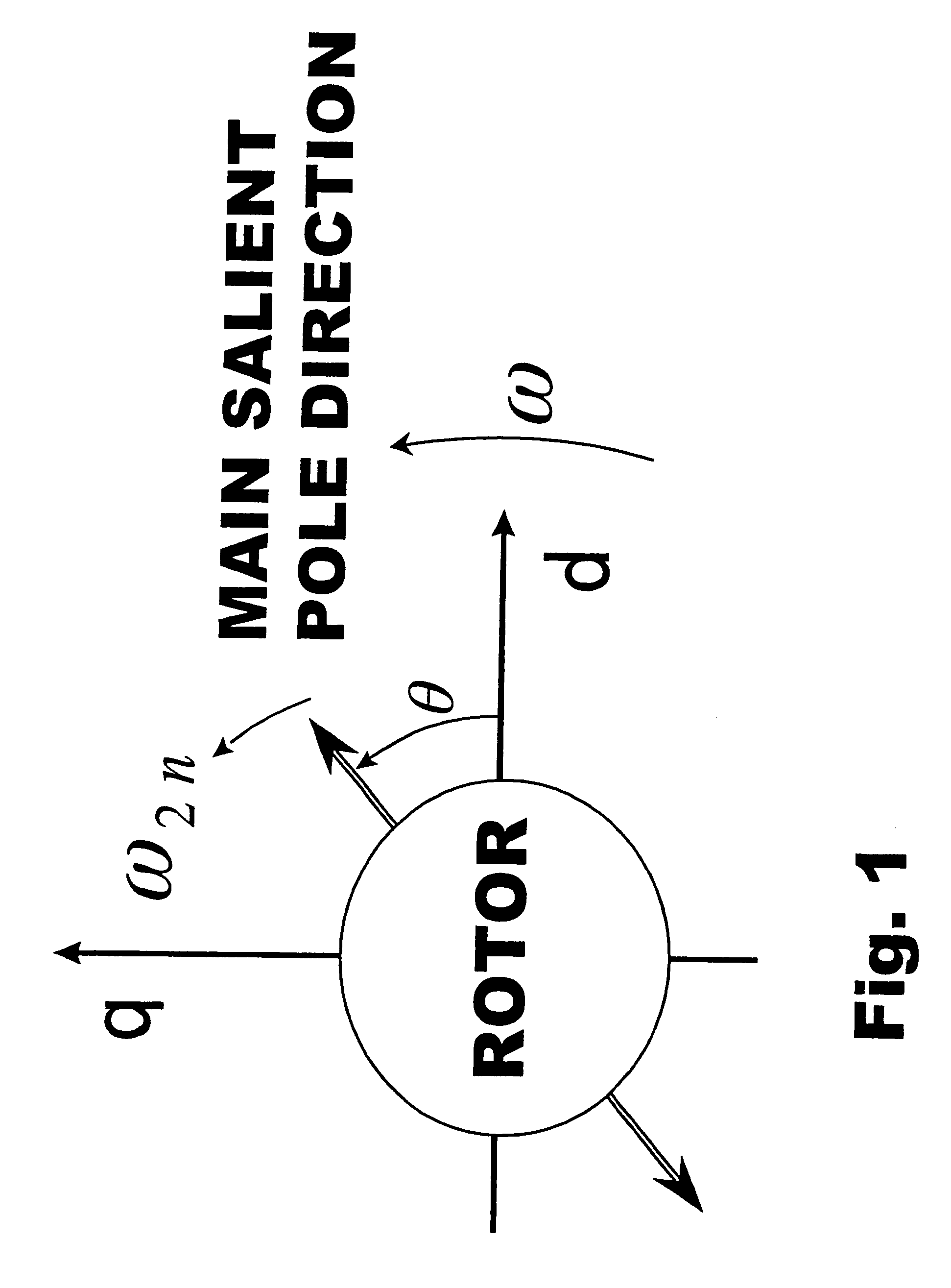Vector control method for synchronous reluctance motor
a synchronous reluctance motor and control method technology, applied in the direction of motor/generator/converter stopper, dynamo-electric converter control, dynamo-electric gear control, etc., can solve the problem of deteriorating the reliability of the motor system, affecting the accuracy of cosine estimation, and affecting the reliability of the motor body. , to achieve the effect of accurate and efficient estimation
- Summary
- Abstract
- Description
- Claims
- Application Information
AI Technical Summary
Benefits of technology
Problems solved by technology
Method used
Image
Examples
first embodiment
FIG. 8 shows the cosine and sine generator 12b. In the drawing, 12b-1 is a double angle cosine and sine generator and 12b-2 is an intermediate angle cosine and sine generator. And, 12b-3 is a judging device which generates a selection signal to be used for selection of a determination method by the intermediate angle cosine and sine generator.
The double angle cosine and sine generator receives as input the estimates of the in-phase flux vector and the mirror-phase flux vector, determines the estimates of cosine and sine of the double angle of the intermediate angle of both vectors and outputs them. This estimate value determination processing is performed according to the equation (16). The intermediate angle cosine and sine generator 12b-2 receives as input the cosine and sine estimates of the double angle output from the double angle cosine and sine generator 12b-1 and uses them to determine and output the estimates of cosine and sine of the intermediate angle.
According to the pre...
second embodiment
FIG. 10 shows the cosine and sine generator 12b. In this drawing, 12b-4 is a vector addition synthesizer. The vector addition synthesizer multiplies the estimate value of the in-phase flux vector and the estimate value of the mirror-phase flux vector by the reciprocal of their respective inductances, makes its norm the same, and then generates and outputs a synthesis vector by adding the vectors. In the vector addition synthesizer, K.sub.2 is a design parameter whose design is entrusted to a designer and may be generally selected as desired but can be preferably selected to be 1, L.sub.a or L.sub.b. In FIG. 10, 12b-5 is a vector normalization device for the additive synthesis vector and determines the estimates of cosine and sine of the intermediate angle in proportion to the synthesis vector. In this embodiment, the vector having the cosine and sine values of the intermediate angle as first and second components is a unit vector, so that such a unit property is used to normalize th...
third embodiment
FIG. 11 is the cosine and sine generator 12b. In the drawing, 12b-6 denotes a vector subtraction synthesizer. The vector subtraction synthesizer multiplies the estimate value of the in-phase flux vector and the estimate value of the mirror-phase flux vector by the reciprocal of each related inductance to make the norm the same, and performs vector subtraction to generate and output a synthesis vector. In the vector subtraction synthesizer, K.sub.2 is a design parameter whose design is entrusted to the designer and generally selected as desired, with 1, L.sub.a, L.sub.b being preferable candidate values. In FIG. 11, 12b-7 is a vector normalization device for the subtraction synthesis vector and decides the estimates of cosine and sine of the intermediate angle in skewed proportion to the synthesis vector. In this embodiment, the vector having the estimates of cosine and sine of the intermediate angle as first and second components is a unit vector, and the estimates of cosine and sin...
PUM
 Login to View More
Login to View More Abstract
Description
Claims
Application Information
 Login to View More
Login to View More - R&D
- Intellectual Property
- Life Sciences
- Materials
- Tech Scout
- Unparalleled Data Quality
- Higher Quality Content
- 60% Fewer Hallucinations
Browse by: Latest US Patents, China's latest patents, Technical Efficacy Thesaurus, Application Domain, Technology Topic, Popular Technical Reports.
© 2025 PatSnap. All rights reserved.Legal|Privacy policy|Modern Slavery Act Transparency Statement|Sitemap|About US| Contact US: help@patsnap.com



